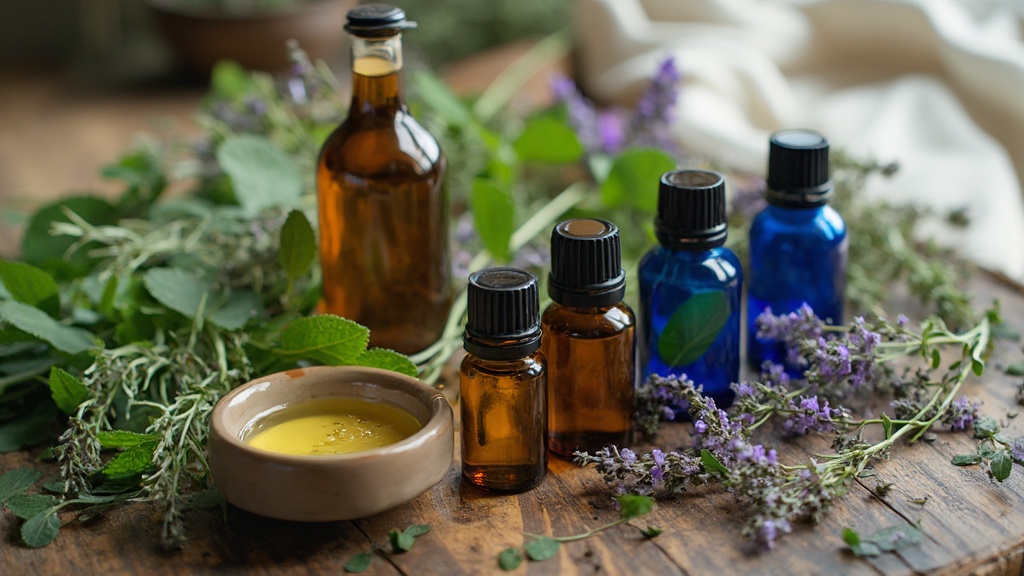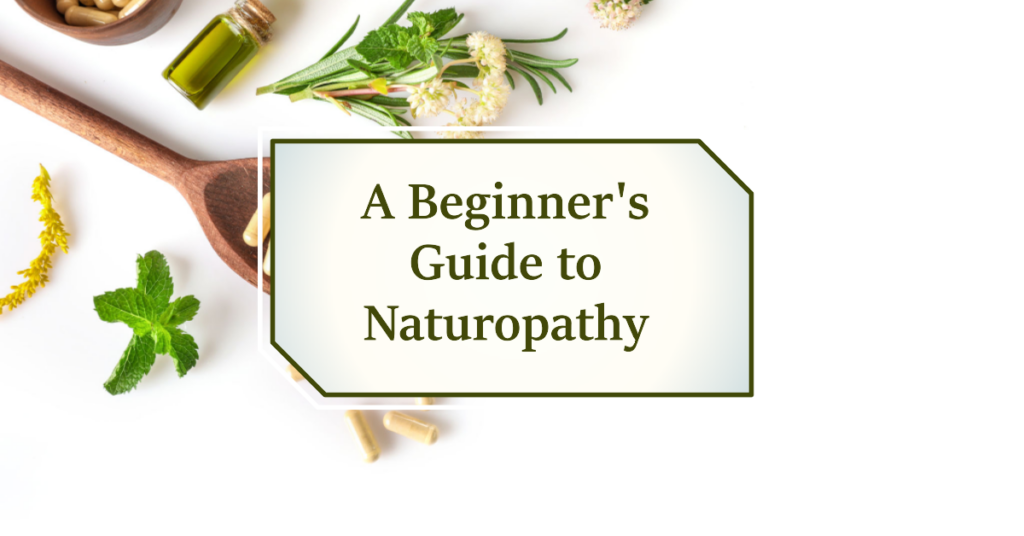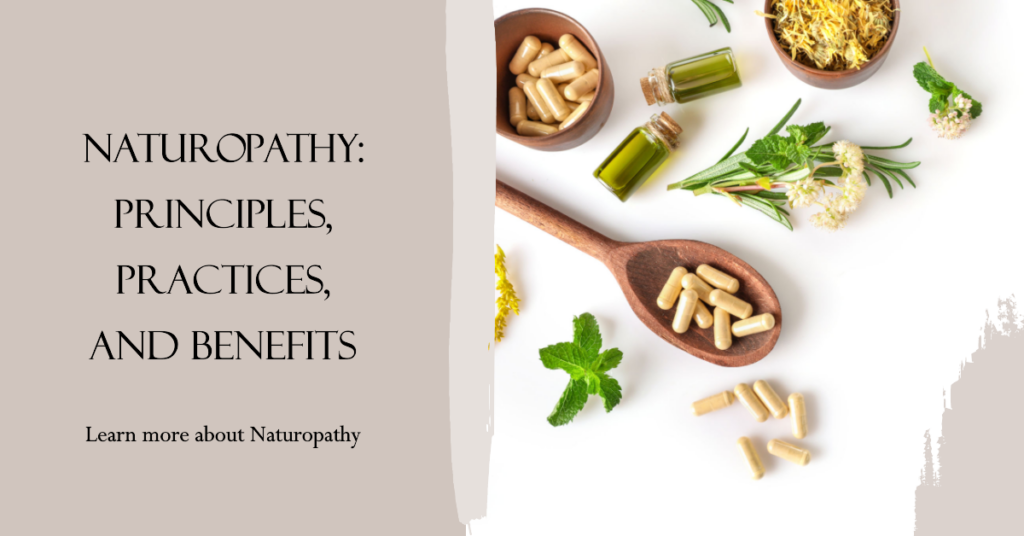8 Natural Ways to Relieve Headaches at Home

Table of Contents
Headaches can be debilitating, affecting our daily lives and productivity. While over-the-counter medications are readily available, many people prefer natural remedies to alleviate their discomfort. This article explores eight effective natural ways to relieve headaches at home, drawing from both traditional wisdom and modern research.
As we delve into these natural remedies, it’s worth noting that a holistic approach to health, such as that taught in the Naturopathy Practitioner course, can provide a deeper understanding of how to maintain overall well-being and prevent headaches in the long term. This comprehensive training equips individuals with the knowledge to address various health concerns using natural methods.
1. Stay Hydrated

Time Required: Ongoing throughout the day
Materials Needed: Water, herbal teas (optional)
Dehydration is a common trigger for headaches. Ensuring proper hydration is a simple yet effective way to prevent and alleviate headache pain. The human body is composed of about 60% water, and maintaining this balance is crucial for optimal functioning.
To stay adequately hydrated:
- Aim to drink at least 8 glasses (64 ounces) of water daily
- Increase water intake during hot weather or physical activity
- Consider using a water tracking app or setting reminders
- Include hydrating foods like cucumbers, watermelon, and zucchini in your diet
A study published in the journal Headache found that increasing water intake by an average of 1.5 liters per day reduced headache intensity and duration in patients prone to migraines and tension headaches. This simple intervention can make a significant difference in managing headache symptoms.
Benefits:
- Reduces the frequency and intensity of headaches
- Improves overall cognitive function and mood
- Supports proper bodily functions, including toxin elimination
- Enhances skin health and appearance
2. Use Essential Oils

Time Required: 5-10 minutes
Materials Needed: Essential oils (peppermint, lavender, or eucalyptus), carrier oil
Essential oils have been used for centuries to alleviate various ailments, including headaches. Their natural compounds can help relax muscles, reduce inflammation, and promote overall relaxation. Peppermint, lavender, and eucalyptus oils are particularly effective for headache relief.
To use essential oils for headache relief:
- Dilute 2-3 drops of essential oil in a carrier oil like coconut or jojoba oil
- Gently massage the mixture onto your temples, forehead, and back of the neck
- Inhale deeply to benefit from the aromatic properties
- Alternatively, add a few drops to a diffuser for ambient relief
A study published in the journal Frontiers in Neurology found that peppermint oil application significantly reduced the intensity of tension-type headaches within 15 minutes. This natural remedy offers a quick and pleasant way to address headache pain.
Benefits:
- Provides rapid relief from headache symptoms
- Promotes relaxation and stress reduction
- Offers aromatherapy benefits for overall well-being
- Can be easily incorporated into daily routines
3. Try Acupressure

Time Required: 5-15 minutes
Materials Needed: None (just your fingers)
Acupressure is an ancient healing practice that involves applying pressure to specific points on the body to relieve pain and promote healing. This technique is based on the principles of Traditional Chinese Medicine and can be easily performed at home for headache relief.
According to a study published in the American Journal of Chinese Medicine, acupressure was found to be effective in reducing chronic headache pain and improving quality of life. This non-invasive technique offers a drug-free alternative for managing headaches.
Key acupressure points for headache relief include:
- LI-4 (Hegu): Located in the web between your thumb and index finger
- GB-20 (Feng Chi): Found at the base of the skull, in the hollow areas on both sides of the neck
- Tai Chong (LV3): Located on the top of the foot, in the depression between the big toe and second toe
To perform acupressure:
- Locate the desired pressure point
- Apply firm, steady pressure using your thumb or index finger
- Hold for 30 seconds to 1 minute while taking deep breaths
- Release slowly and repeat on other points as needed
For a comprehensive guide on acupressure points for headache relief, you can refer to this informative article on pressure points for headaches. This resource provides detailed instructions and illustrations to help you locate and stimulate the correct points effectively.
Benefits:
- Provides quick, natural relief from headache pain
- Can be performed anywhere, anytime
- Promotes overall relaxation and stress reduction
- May help prevent future headaches when practiced regularly
4. Apply a Cold Compress

Time Required: 15-20 minutes
Materials Needed: Cold pack or ice wrapped in a towel
Applying a cold compress to the forehead or neck can provide quick relief from headache pain. Cold therapy works by constricting blood vessels and reducing inflammation, which can help alleviate the throbbing sensation associated with headaches.
To use a cold compress effectively:
- Wrap ice or a cold pack in a thin towel to protect your skin
- Apply the compress to your forehead, temples, or back of the neck
- Keep the compress in place for 15-20 minutes
- Repeat as needed, allowing your skin to return to normal temperature between applications
A study published in the Hawaii Medical Journal found that cold therapy was effective in reducing migraine pain intensity for 77% of participants. This simple, at-home remedy can provide significant relief without the need for medication.
Benefits:
- Reduces inflammation and swelling
- Numbs pain and provides a soothing sensation
- Can be easily combined with other relaxation techniques
- Cost-effective and readily available solution
5. Sip on Herbal Tea

Time Required: 10-15 minutes to prepare and consume
Materials Needed: Herbal tea (ginger, peppermint, or chamomile), hot water, honey (optional)
Herbal teas have been used for centuries to alleviate various ailments, including headaches. Certain herbs possess natural pain-relieving and anti-inflammatory properties that can help soothe headache symptoms. Additionally, the act of sipping warm tea can be relaxing, which may further contribute to headache relief.
Effective herbal teas for headache relief include:
- Ginger tea: Known for its anti-inflammatory properties
- Peppermint tea: Can help relax tense muscles and improve circulation
- Chamomile tea: Promotes relaxation and may help reduce stress-related headaches
To prepare herbal tea:
- Steep the herbal tea bag or loose herbs in hot water for 5-10 minutes
- Add honey if desired for sweetness and additional health benefits
- Sip slowly, taking deep breaths to inhale the aromatic steam
- Repeat as needed throughout the day
A study published in the journal Phytotherapy Research found that ginger powder was as effective as sumatriptan (a common migraine medication) in reducing migraine severity. This suggests that natural remedies like herbal teas can be powerful alternatives to conventional treatments.
For more information on how dietary changes, including the consumption of certain foods and supplements, can help prevent migraines, you can refer to this comprehensive article on foods and supplements for migraine prevention. This resource provides valuable insights into the role of nutrition in managing headaches.
Benefits:
- Provides natural pain relief and anti-inflammatory effects
- Promotes relaxation and stress reduction
- Offers hydration, which is crucial for headache prevention
- Can be easily incorporated into daily routines
6. Practice Relaxation Techniques

Time Required: 10-30 minutes
Materials Needed: Quiet space, comfortable seating or yoga mat (optional)
Stress and tension are common triggers for headaches. Incorporating relaxation techniques into your daily routine can help prevent and alleviate headache pain. These practices not only address immediate discomfort but also contribute to long-term stress management and overall well-being.
Effective relaxation techniques for headache relief include:
- Deep breathing exercises
- Progressive muscle relaxation
- Meditation
- Guided imagery
- Yoga
To practice deep breathing:
- Find a quiet, comfortable space
- Sit or lie down in a relaxed position
- Inhale slowly through your nose for a count of 4
- Hold your breath for a count of 4
- Exhale slowly through your mouth for a count of 4
- Repeat for 5-10 minutes or until you feel relaxed
A study published in the journal Headache found that regular practice of relaxation techniques, including progressive muscle relaxation and meditation, significantly reduced the frequency and intensity of tension-type headaches. These practices offer a drug-free approach to managing headache symptoms and improving overall quality of life.
For those interested in exploring yoga as a method for headache relief, this informative article on yoga for migraine relief provides valuable insights into specific poses and practices that can help alleviate headache pain.
Benefits:
- Reduces muscle tension and stress
- Improves overall mental well-being
- Enhances body awareness and mindfulness
- Can be practiced anywhere, anytime
7. Make Dietary Changes

Time Required: Ongoing lifestyle change
Materials Needed: Nutritious foods, food journal (optional)
Certain foods and dietary habits can trigger headaches in some individuals. Making mindful changes to your diet can help prevent and alleviate headache pain. It’s important to identify personal triggers and make adjustments accordingly.
Consider these dietary changes for headache relief:
- Stay hydrated by drinking plenty of water throughout the day
- Avoid or limit known triggers such as caffeine, alcohol, and processed foods
- Incorporate magnesium-rich foods like leafy greens, nuts, and whole grains
- Maintain regular meal times to prevent low blood sugar
- Consider a food journal to track potential triggers
A study published in the journal Nutrients found that a diet rich in omega-3 fatty acids and low in omega-6 fatty acids reduced headache frequency and intensity in chronic headache sufferers. This suggests that dietary interventions can play a significant role in managing headache symptoms.
For a comprehensive overview of foods and supplements that may help prevent or reduce the frequency of migraines, you can refer to this informative article on foods and supplements for migraine prevention. This resource provides valuable insights into dietary strategies for headache management.
Benefits:
- Reduces frequency and intensity of headaches
- Improves overall health and well-being
- Helps identify and avoid personal headache triggers
- Promotes a balanced and nutritious diet
8. Engage in Gentle Exercise

Time Required: 20-30 minutes
Materials Needed: Comfortable clothing, supportive shoes
Regular, moderate exercise can help reduce the frequency and severity of headaches. Physical activity releases endorphins, the body’s natural painkillers, and can help alleviate stress and tension that often contribute to headaches.
Gentle exercises suitable for headache relief include:
- Brisk walking
- Swimming
- Cycling
- Low-impact aerobics
- Gentle yoga or stretching
To incorporate exercise for headache relief:
- Start with short, 10-15 minute sessions and gradually increase duration
- Choose activities you enjoy to maintain consistency
- Listen to your body and avoid overexertion
- Stay hydrated before, during, and after exercise
- Consider exercising outdoors for added benefits of fresh air and natural light
A study published in the journal Cephalalgia found that regular aerobic exercise was as effective as relaxation therapy in reducing migraine frequency. This suggests that incorporating gentle exercise into your routine can be a powerful tool for managing headaches.
Benefits:
- Reduces stress and tension
- Improves overall physical and mental well-being
- Enhances sleep quality, which can help prevent headaches
- Boosts mood and energy levels
Conclusion
Incorporating these eight natural remedies into your daily routine can significantly reduce the frequency and intensity of headaches. From staying hydrated and using essential oils to practicing relaxation techniques and making dietary changes, these methods offer a holistic approach to headache management without relying on medication.
Remember that everyone’s experience with headaches is unique, and what works for one person may not work for another. It’s essential to listen to your body and consult with a healthcare professional if you experience severe or persistent headaches.
For those interested in exploring natural healing methods further, the naturopathy practitioner training course offers comprehensive insights into holistic health practices. This course can provide valuable knowledge for managing not only headaches but also overall well-being through natural means.
Explore More
To deepen your understanding of natural health practices and their applications, consider exploring these related topics:
- what-can-you-do-with-a-naturopathy-certification
- 7-reasons-to-become-naturopathic-practitioner
- dispelling-myths-naturopathy-is-not-pseudoscience-it-is-evidence-based-healing
- understanding-differences-between-naturopathy-practitioner-and-naturopathic-doctor
- integrating-naturopathy-conventional-medicine
- uncover-the-core-principles-of-naturopathy
- naturopathy-vs-conventional-medicine-comparison
- naturopathy-principles-practices-benefits
- beginners-guide-to-naturopathy
- naturopathic-medicine-womens-health
- getting-natural-relief-from-pain-through-naturopathy
- 10-naturopathic-treatments-for-specific-health-conditions
References
- WebMD: Alternative Therapies for Tension Headaches
- Medical News Today: Foods and Supplements for Migraine Prevention
- Healthline: Pressure Points for Headaches
- WebMD: Yoga for Migraine Relief
- The Medicine Gap: Sarah’s Chronic Migraines
- PsicoSmart: Integrating Predictive Analytics with Employee Wellness Programs
- The Healing Center Denver: Success Stories











Responses